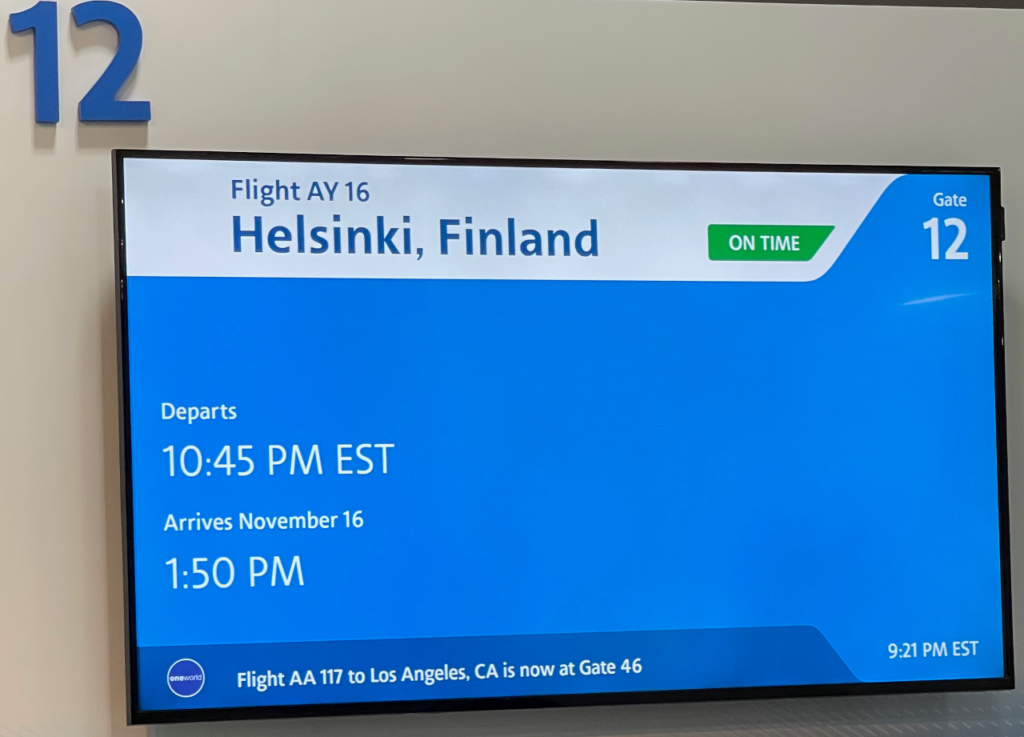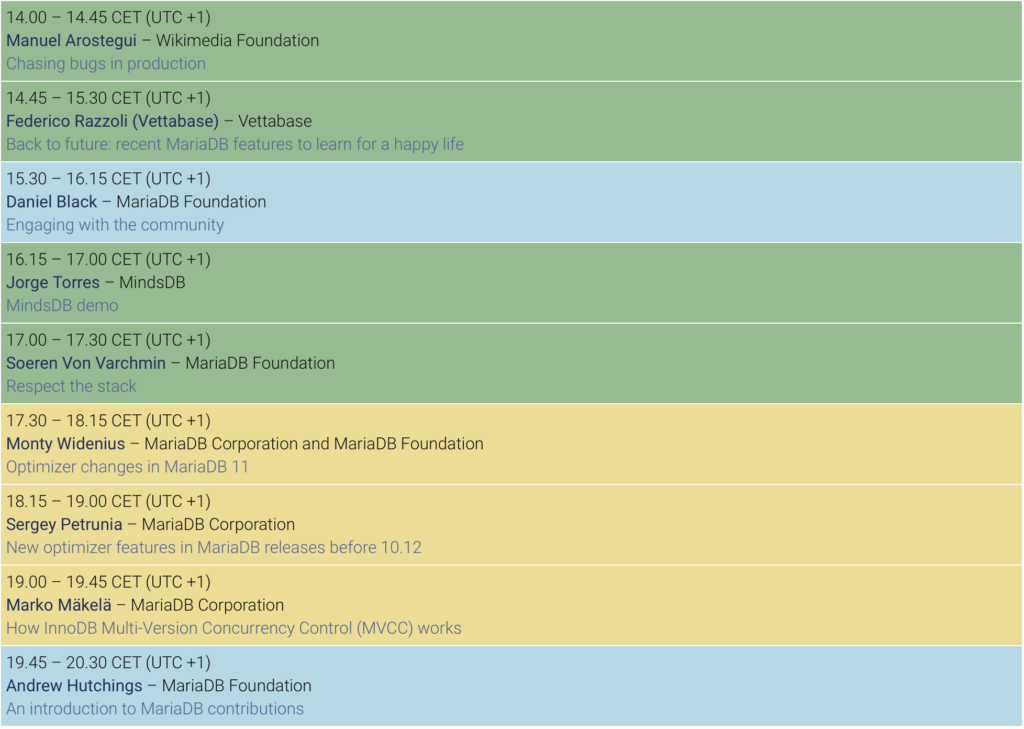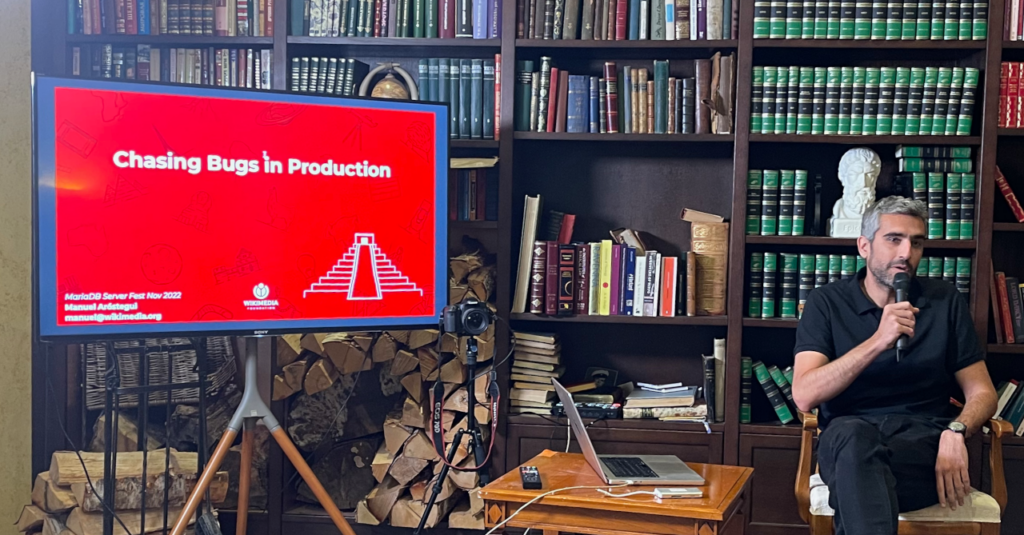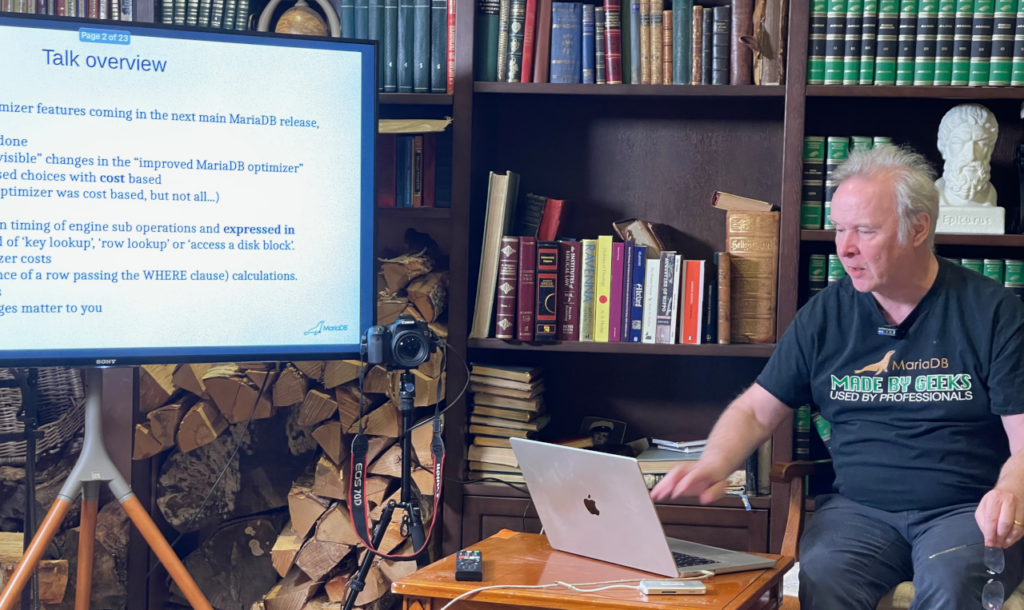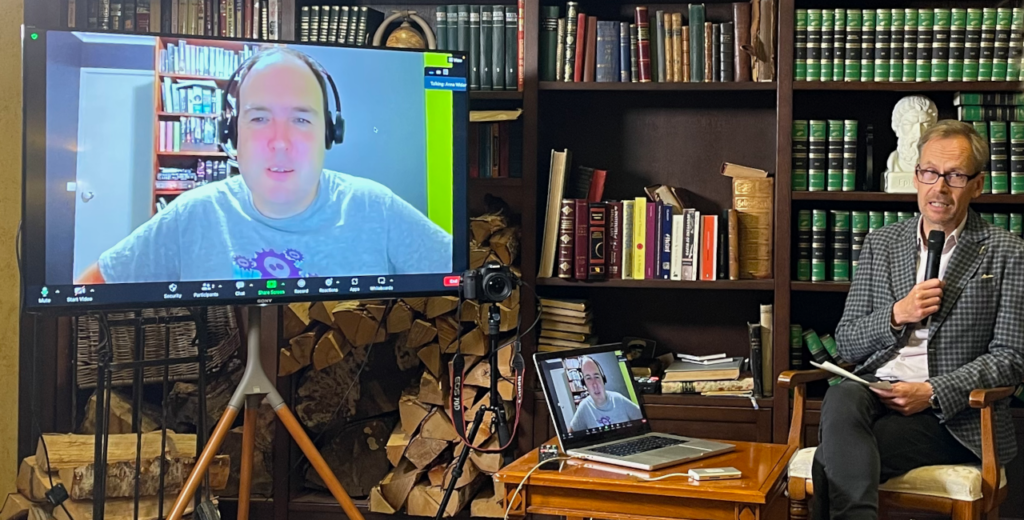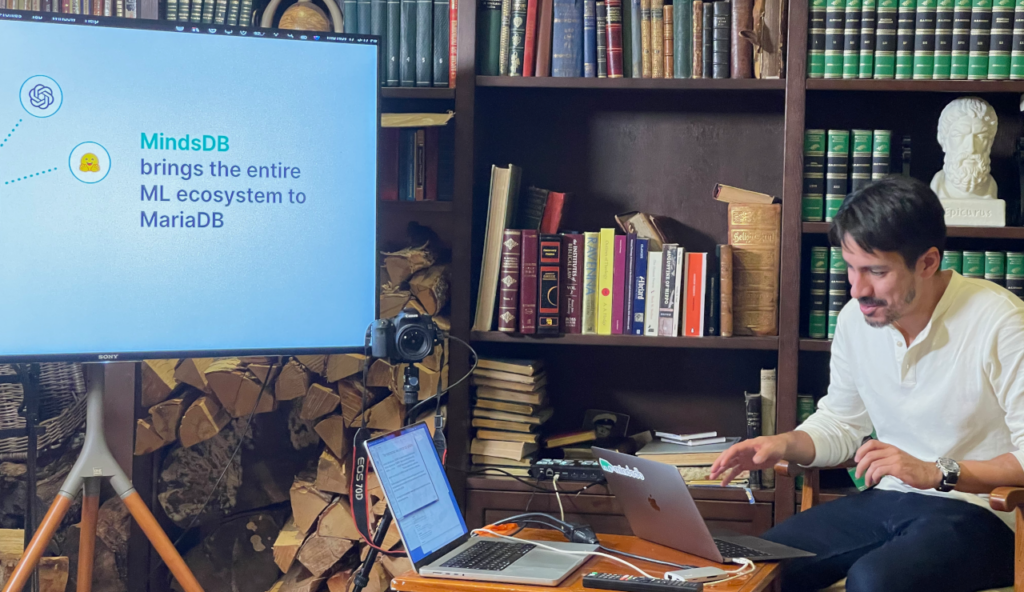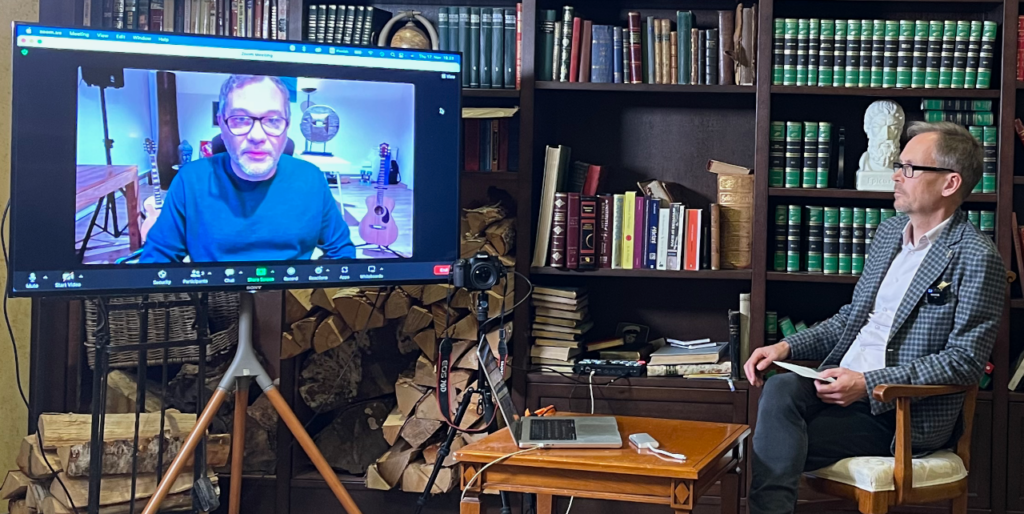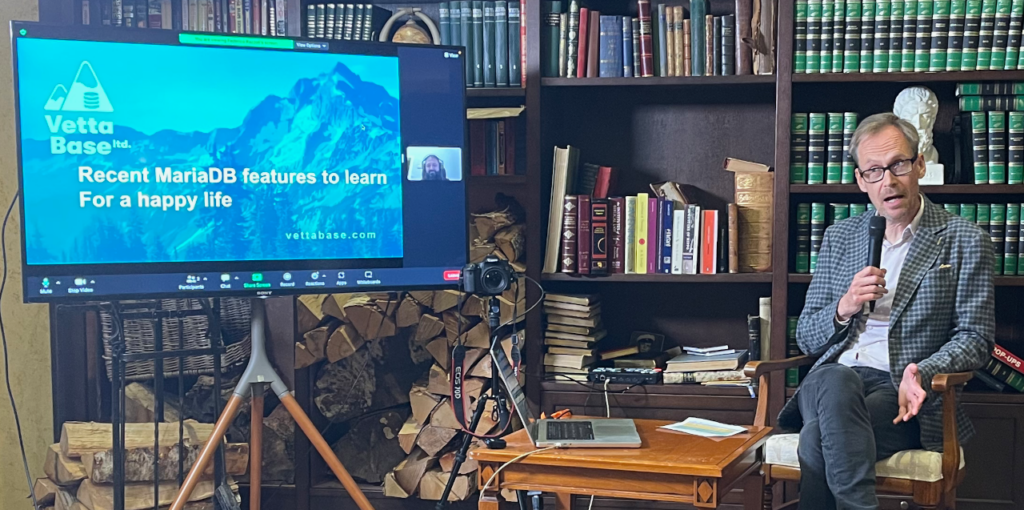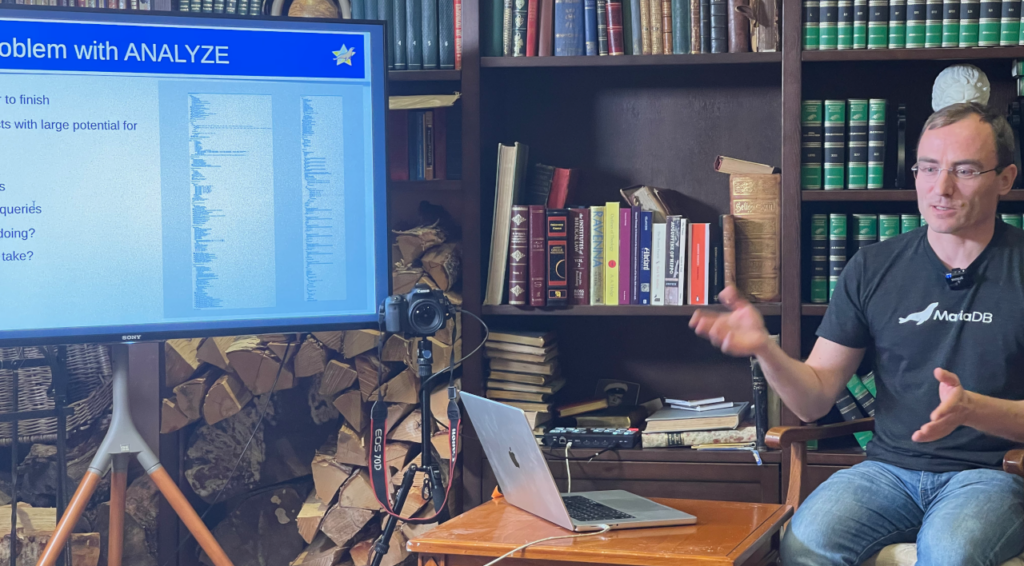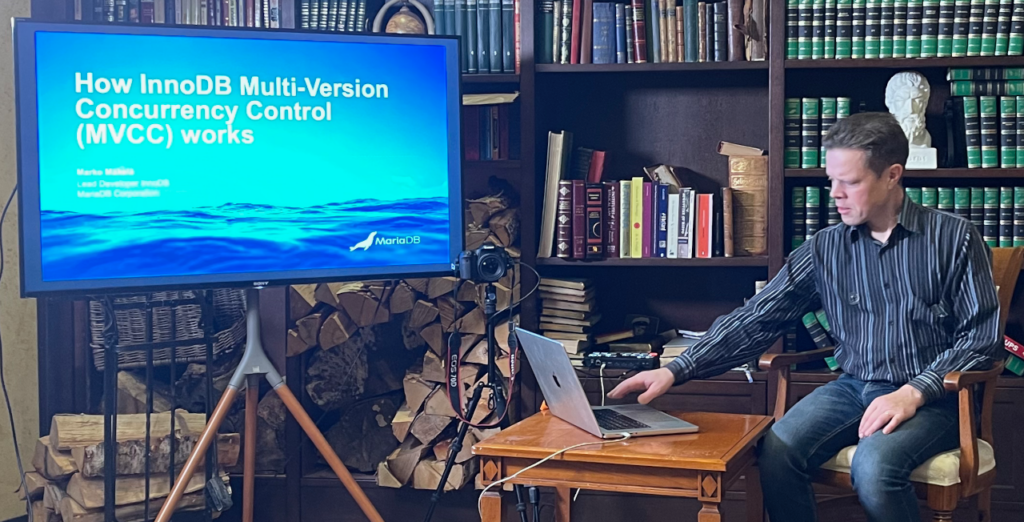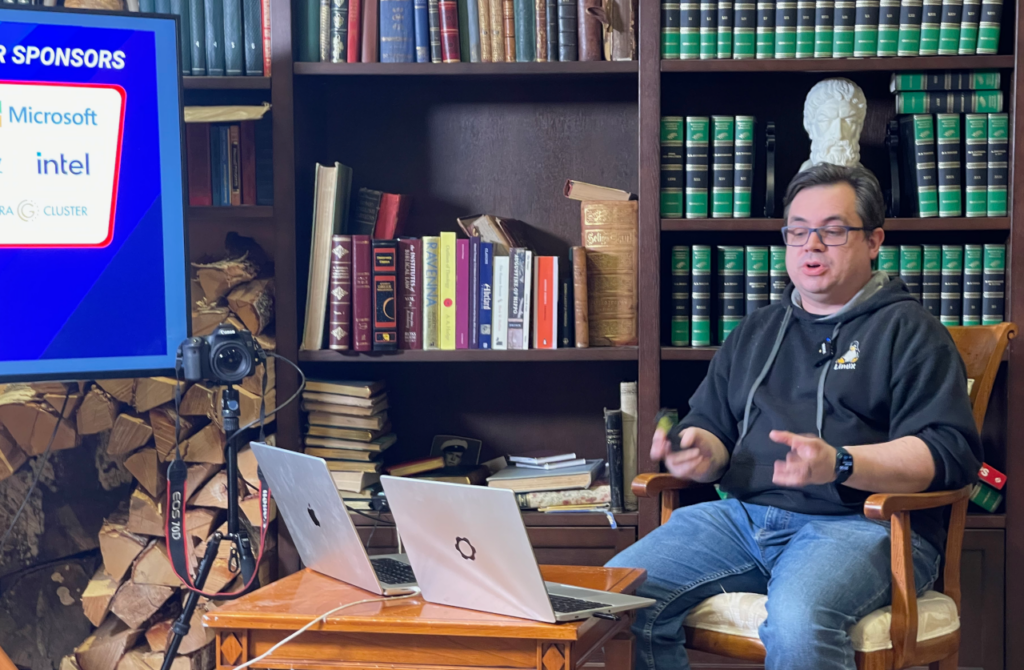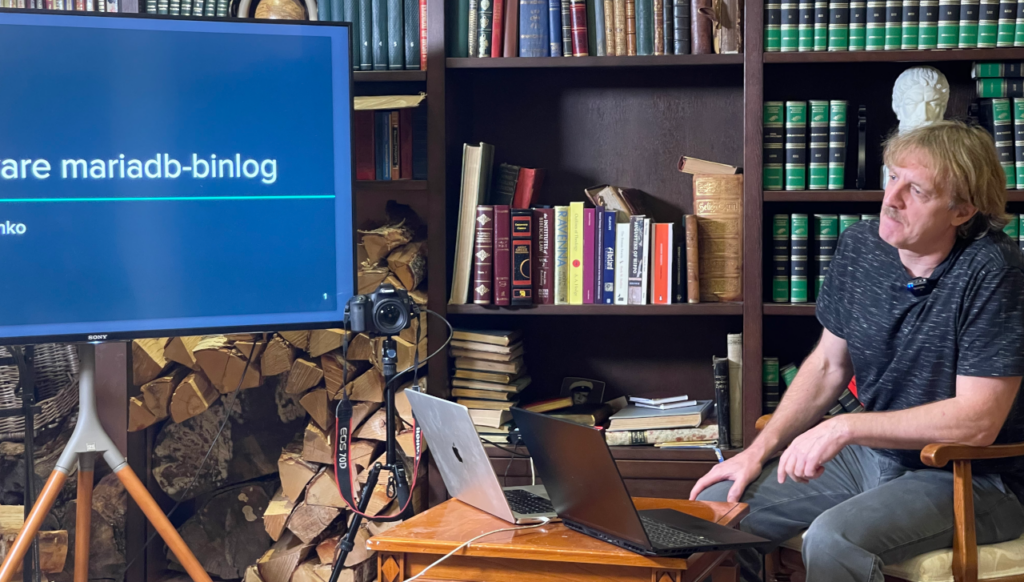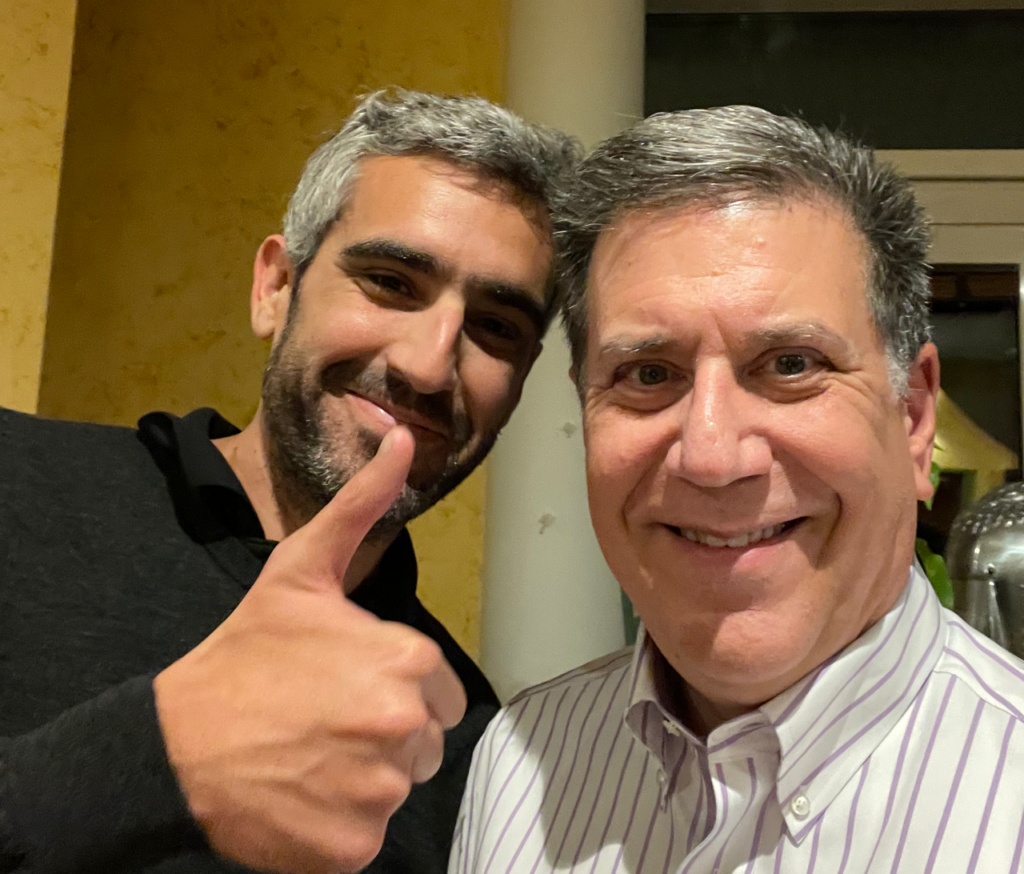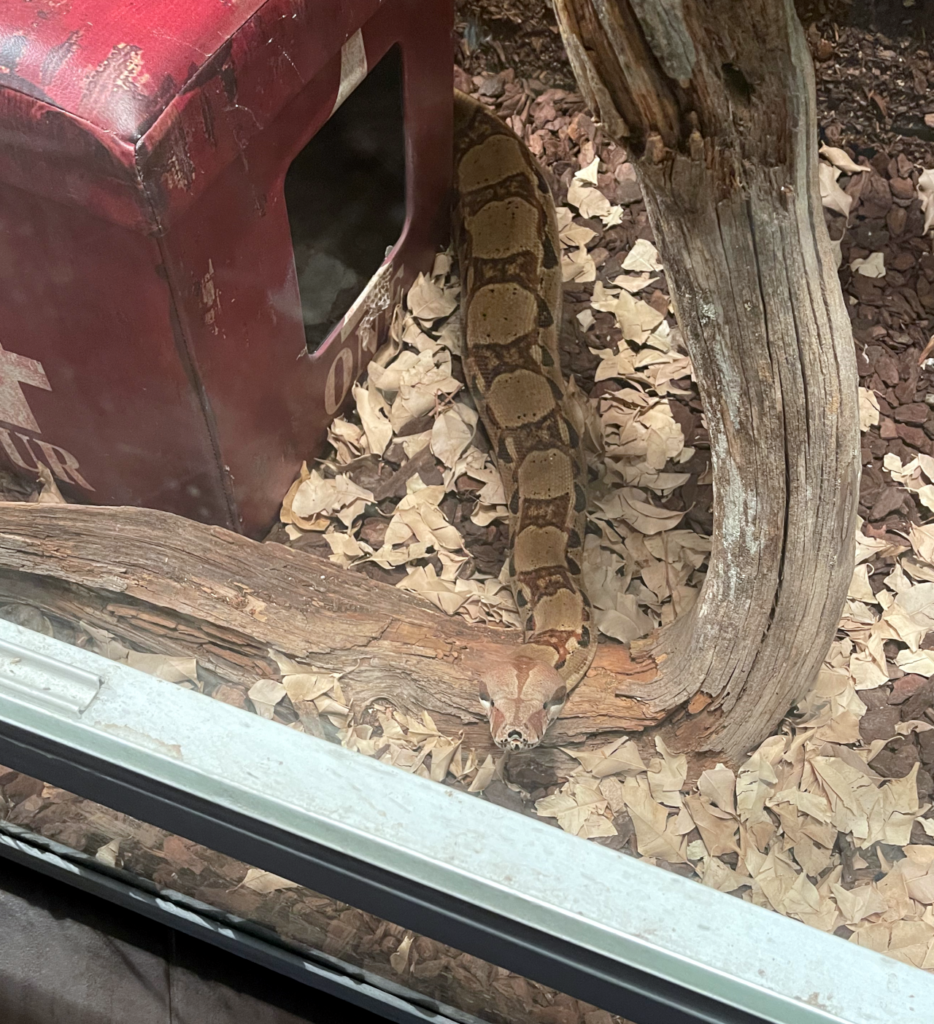The thing I like most about my job is that I get to meet and work with amazing people. Recently I traveled to Helsinki, Finland, to attend the MariaDB Server Fest conference. It was a great experience and I met some very talented people, including Monty Widenius himself.
Note: The usual disclaimer that this is my personal blog and what I write here does not necessarily reflect the views of my employer, Amazon Web Services
My role at AWS is to work with open source companies and communities and to act as a liaison between them and Amazon. In thinking about important open source projects one of the first that comes to mind is MariaDB.
When I first got seriously involved in open source back in 2001, the MySQL database was an example of an open source success story. While a lot of the focus of the early days of open source was on the operating system, MySQL demonstrated that open source applications were powerful enough to compete with existing proprietary solutions. Plus, if you were building an open source application, quite often you needed a database, and MySQL provided a great option.
Many of us expected MySQL to IPO, but instead the company was bought by Sun Microsystems. That wasn’t too worrisome since Sun was a big proponent of open source, but when Sun was bought out by Oracle a couple of years later, that all changed.
On the day the acquisition was announced, Monty Widenius (the lead developer of MySQL) announced a fork of MySQL called MariaDB. In the years since then, a lot of people have replaced MySQL with MariaDB. While Oracle has continued to work on MySQL, the last major release, version 8.0, came out in April of 2018 so one must wonder how motivated they are to work on a product that competes with their main proprietary offering.
When I learned about Server Fest I decided to attend. As much as I like the ease of remote communication, sometimes nothing beats meeting face to face. I had also been to Helsinki a couple of time before and I really like the city, although I really should try to visit once in the summer time.
I flew from North Carolina to JFK and then took a Finnair flight to Finland. Helsinki is seven hours ahead of New York, so it is one of those weird trips where you leave in the night and land the following afternoon. When I travel I tend to stay at Marriott properties, but all the Marriott affiliated hotels were booked. I later learned that this was because a popular start-up conference called Slush was happening at the same time as Server Fest. Because of this there was no meeting space for rent, so the MariaDB event was being held at Monty’s house, which I thought was kind of cool.
The conference was on Thursday, November 17th, and was going to be live-streamed on YouTube. In order to better match up with the time zone in New York, it started around 3pm and ran into the night. I arrived mid-morning.
When you walk into Monty’s house, the first thing you notice is that is has a very open floorplan. Directly across from the entryway is a huge table that can probably seat about 20 people, and that’s where most folks had set up their laptops. To the right of that was a large kitchen, and to the left was an open area where the walls were lined with bookcases, and that is where lights and cameras had been set up for the livestream.
Now MariaDB is organized in two parts. There is the MariaDB corporation, which is the main commercial enterprise behind the project, and there is the MariaDB Foundation, which manages project governance and promotion. Both were represented in the day’s presenters, and I also got to meet and spend a lot of time with Kaj Arnö, who is the CEO of the Foundation.
I also got to meet the true boss of the event, Anna Widenius, Monty’s wife. As you can imagine, getting a bunch of open source geeks organized is like herding cats, but she did a great job in getting the conference underway and keeping it moving.
The event kicked off with a presentation by Manuel Arostegui, who helps maintain the MariaDB infrastructure at the Wikimedia Foundation.
He talked about “Chasing Bugs in Production”. When Wikimedia upgraded from MariaDB 10.4 to 10.6 they ran into a performance issue. His talk describes their upgrade process and how they were able to work with MariaDB to get the issue addressed. I also found it interesting that they run MariaDB on bare metal. So much of today’s IT infrastructure is based on clouds and Kubernetes that it was refreshing to see someone taking advantage of individual servers when it makes sense.
There was a bit of a hiccup with the second speaker who was supposed to join remotely, so Monty Widenius moved his presentation on query optimization in MariaDB to the second slot.
There are several methods that can be used to execute a query against a database. A good database will optimize the query method to choose the best plan to return the result in fastest time. In MariaDB 11, Monty has changed the method to use a cost-based optimizer (versus rule-based) with parameters that can be tuned by the user. This has resulted in more efficient queries and thus a better user experience.
The third presentation was by Daniel Black who joined us via Zoom from Australia (where it was 1am the next day.
His topic involved the community, and I really liked his comment that MariaDB is “dependent on its users to give MariaDB its purpose” which I thought was pretty insightful.
The next presentation was one of my favorite. It was on MindsDB and was presented by Jorge Torres.
MindsDB allows you to integrate machine learning easily into your database. In his example he used a model trained by Hugging Face to analyze text in order to detect “sentiment” – i.e. is the text positive, negative or neutral. And you access this using SQL queries.
For example, supposed you have a blog or other website where users can submit comments. MindsDB would allow you to examine those comments to detect general sentiment without having to learn an entirely new system. I thought it was pretty cool.
The fifth presentation was on “respecting the stack” or insuring continuity within MariaDB. This was lead by Soeren von Varchmin along with Kaj Arnö and Dom Taylor.
This resonated with me as it focused on building the sponsorship community within MariaDB, for both individuals and entities. MariaDB is an important piece of technology and there are a lot of stakeholders, and this talk really reinforced the idea of a “big tent” environment within the project.
For the next presentation we finally got to hear from Federico Razzoli founder of Vettabase (he was originally scheduled to go second but there was some time zone confusion) as he talked about new MariaDB features to learn “for a happy life”.
He started off with the comment that MariaDB (and open source projects in general) are very good at creating new features and not so good about documenting or advertising them. He discussed the most recent releases of MariaDB and then highlighted various new features that people should find useful.
The seventh presentation was by Sergey Petrunia and revisited the optimizer, but focused on changes made before Monty’s changes in MariaDB 11.
His talk focused on those changes made in the last year (i.e. since the last Server Fest) and it looks like a lot of progress was made to make the optimizer more consistent.
The following talk by Marko Mäkelä was on Multi-Version Concurrency Control (MVCC) and it went right over my head.
From what I can tell, the idea behind MVCC is that active databases are constantly processing transactions but there is a need to provide a consistent “view” at a given point in time, so MVCC determines which transactions are supposed to be considered committed at that point in time and which are not. This is to prevent someone who is reading from the database from being served incomplete information.
The final scheduled talk was by Andrew Hutchings who works to analyze contributions to the MariaDB project.
As transparency is key to any open source project, MariaDB publishes statistics on code contributions. The latest one I can find is through September of this year, and I was happy to see Amazon on the list of contributors to the MariaDB Server code.
Of course the majority of code commits, nearly 80% were done by the MariaDB corporation, and another 14% by the MariaDB Foundation. Amazon represented 1.42% of contributions, but Andrew pointed out to me that they came from 14 unique committers versus 8 from the Foundation. I’d love to see that involvement increase.
We did get a bonus talk by Andrei Elkin on the GTID-aware mariadb-binlog
The mariadb-binlog is a binary log containing a record of all changes to the databases, both data and structure. There is a command line tool that lets you examine this log which now supports Global Transaction IDs, making it easier to filter transactions.
After the Server Fest stream was over, we got to my favorite part of any conference – the socializing.
I did spend some time talking with Manuel Arostegui. One of my friends, Eric Evans, works at the Wikimedia Foundation focused on Cassandra. It turns out that both Manuel and Eric are in the same department. Small world.
We eventually sat down to dinner prepared by the Widenius’s. Monty cooked a huge beef tenderloin, and we talked, sang songs and drank. I managed to get back to my hotel about 1am the next morning.
Usually when I travel home from Europe my flight will leave around noon and I get back in the early afternoon local time. For some reason those flights were over $1000 more than the Finnair flight that left at 5pm, so I returned to Monty’s on Friday morning to visit for a few hours.
I loved the fact that Monty was so welcoming and also that he and his family keep a lot of animals (we do the same). In addition to six cats and three dogs, there is a boa constrictor named Monty Python who is about two meters long. The story I heard was that it was a gift given to a family member that ended up at Monty’s. They originally thought it was a python but later learned it was a boa, but the name stuck.
The trip home was uneventful except for the fact that I got home home close to 2am and I ended up catching a bad case of influenza. To my knowledge no one else at the conference got sick, for which I’m happy, and while it knocked me out of commission for almost two weeks it was worth it.
